Possibilities of Reciprocal Timber Structures in the Formation of Space is a project that aimed to explore the potential of using reciprocal timber structures to create innovative and functional spaces. The projects main goal is to leverage both traditional artisanal technologies and modern digital tools to create structures that combine beauty, functionality and sustainability. The project’s focus is on “digital woodcraft” which refers to the use of digital tools to enhance the traditional craft of woodworking. By combining the precidion and fexibility of digital tools with the creativity and expertise of skilled artisans, the project aimed to push the boundaries of what is possible in timber construction.
Overall, the project sought to demonstrate the exciting possibilities that emerge when we combine traditional techniques with modern technology. Through this approach, we can create structures that are not only beautiful and functional but also environmentally sustainable and socially responsible.

The motivation for this work began when we started using the CNC machine. Even though we ended making different joints for this project this firsts exercises helped us understand what digital woodcraft mean for us which is to create by artisan thinking but with the help and possibilities that digital tools are able to provide us.
Reciprocal Frames (RFs) are structures that are feasible by means of circulating shear with compression or tension interactions between their consecutive member.
- This beams doesn’t meet at the end but somewhere along their length.
- The curvature is created using stacked or notched connections.
- This results in a variation of details regarding angles of intersection, profile dimensions and forces to transfer.

Intentions
One of our goals is that both the design of a free form surface and the fabrication can be coupled to the construction of a reciprocal structure by modifying the thickness and position of the reciprocal cells on a surface in this case a mesh.

Methodology
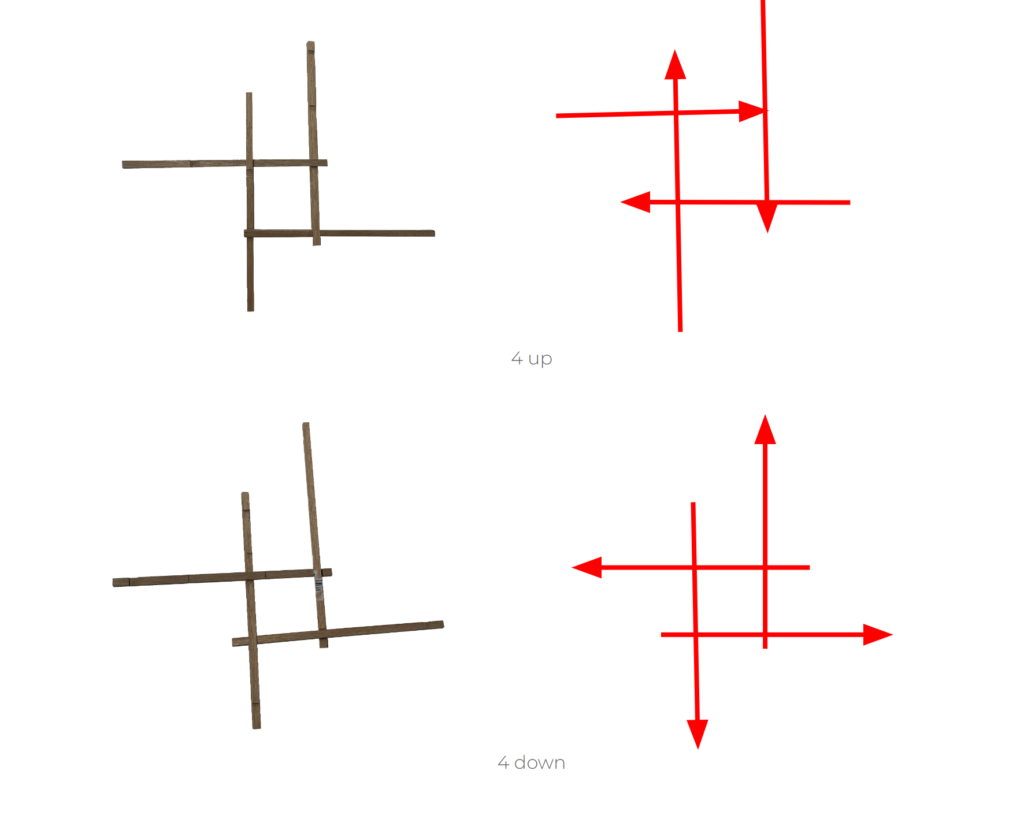
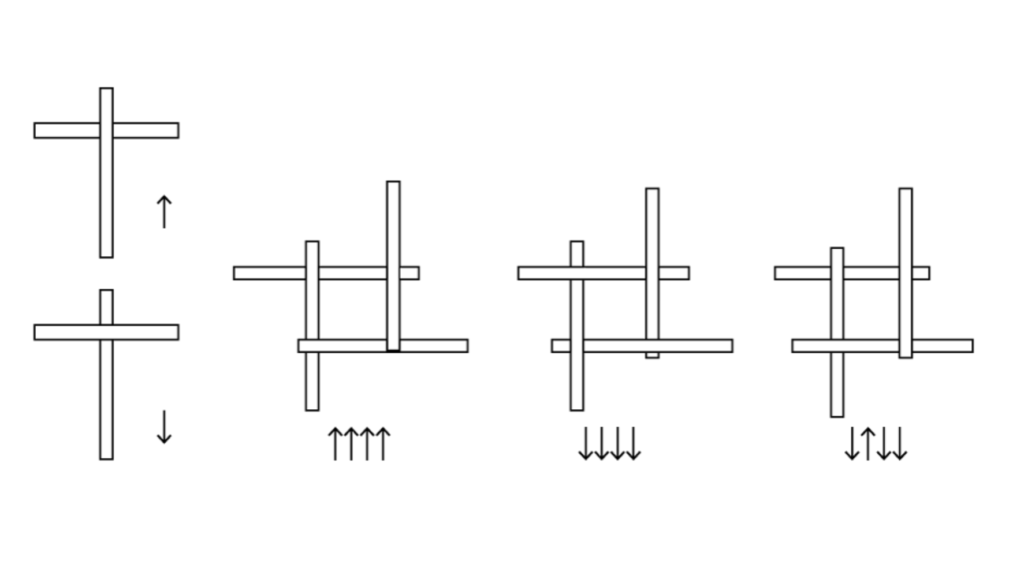
position of beams
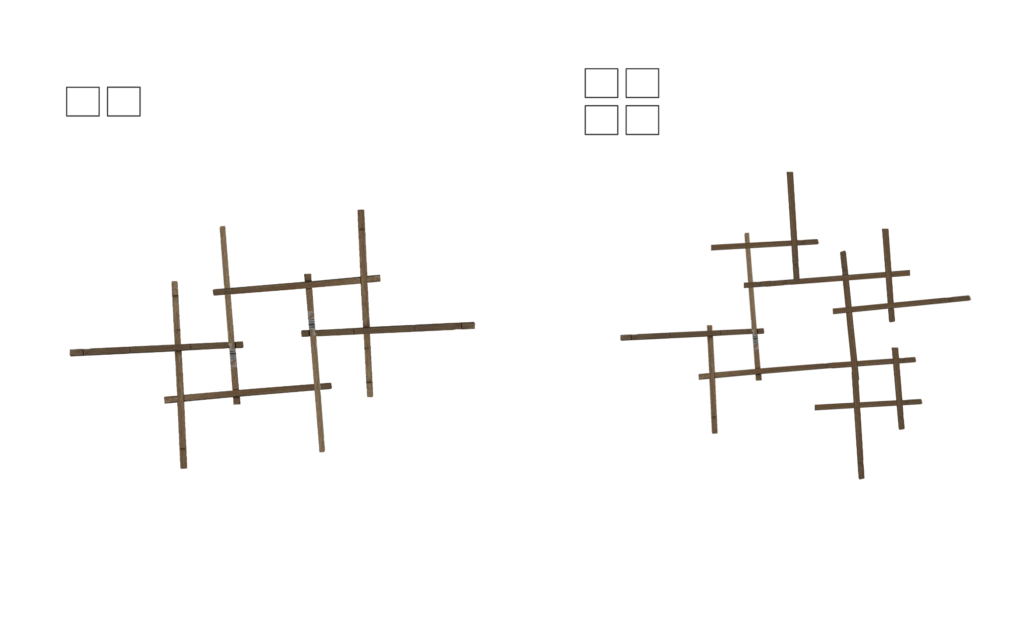
combinations of modules
CNC Strategies
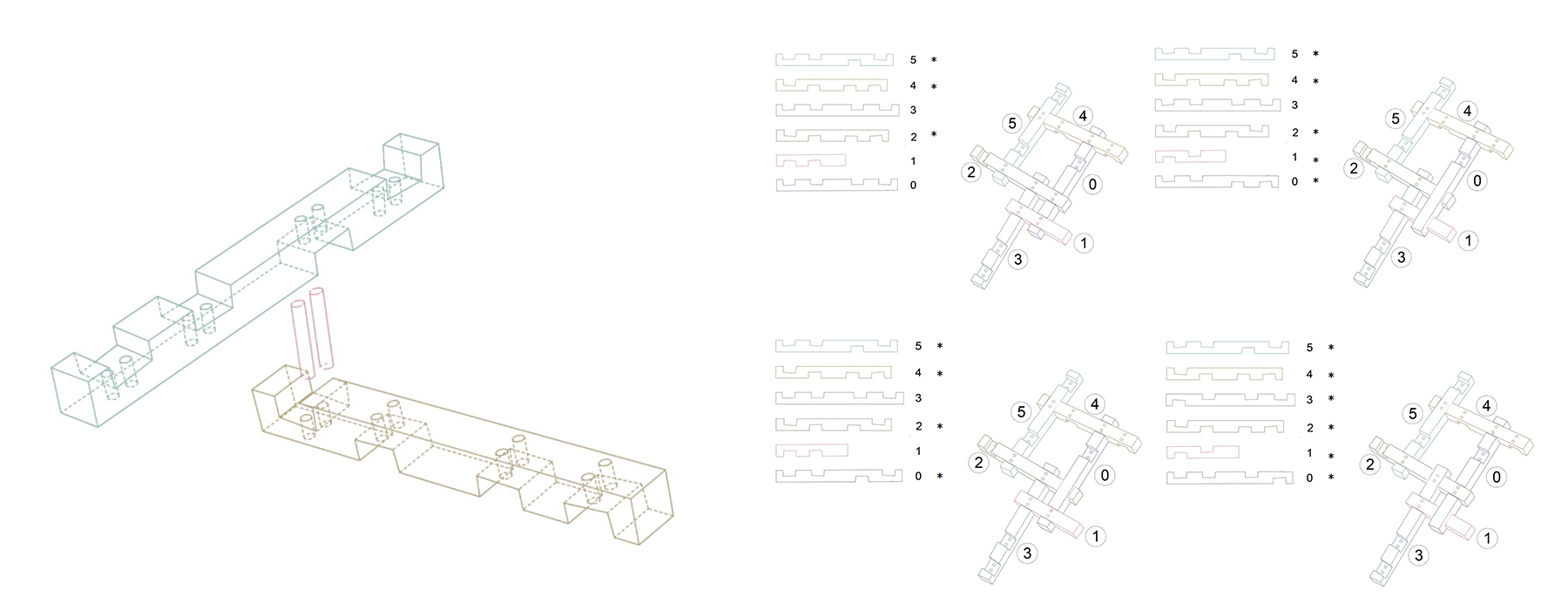
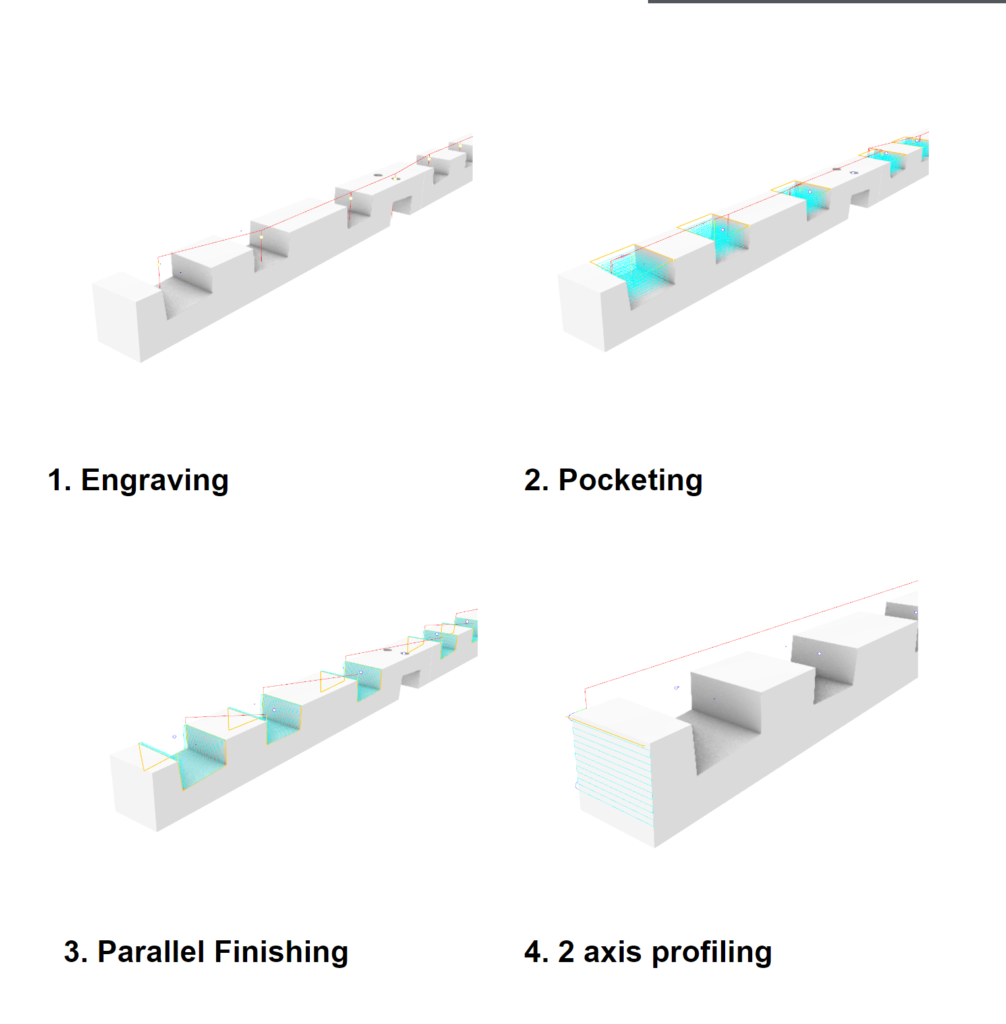
Design Development
The design centers around a rectangular reciprocal frame, which is specifically created to be adaptable to a wide variety of surfaces. One of the key features of this design is its ability to adjust the members of the frame to suit the specific joint requirements of any given surface. This design approach allows us to create a custom solution for each unique application, optimizing the performance of the frame while minimizing potential structural issues.
Whether working with irregular or challenging surfaces, our rectangular reciprocal frame design offers a reliable and practical solution for addressing complex structural challenges.
One of the key factors in the desiging is the use of the Kangaroo plugin within Grasshopper, which enabled us to apply advanced computational design techniques in order to optimize the frame’s geometry and performance.
We also utilized the NGon plugin to create joints that can be adjusted depending on the specific type of joint required for each application. This approach allowed us to create a custom solution for each surface we worked with, optimizing the frame’s performance while minimizing potential structural issues.

Prototype

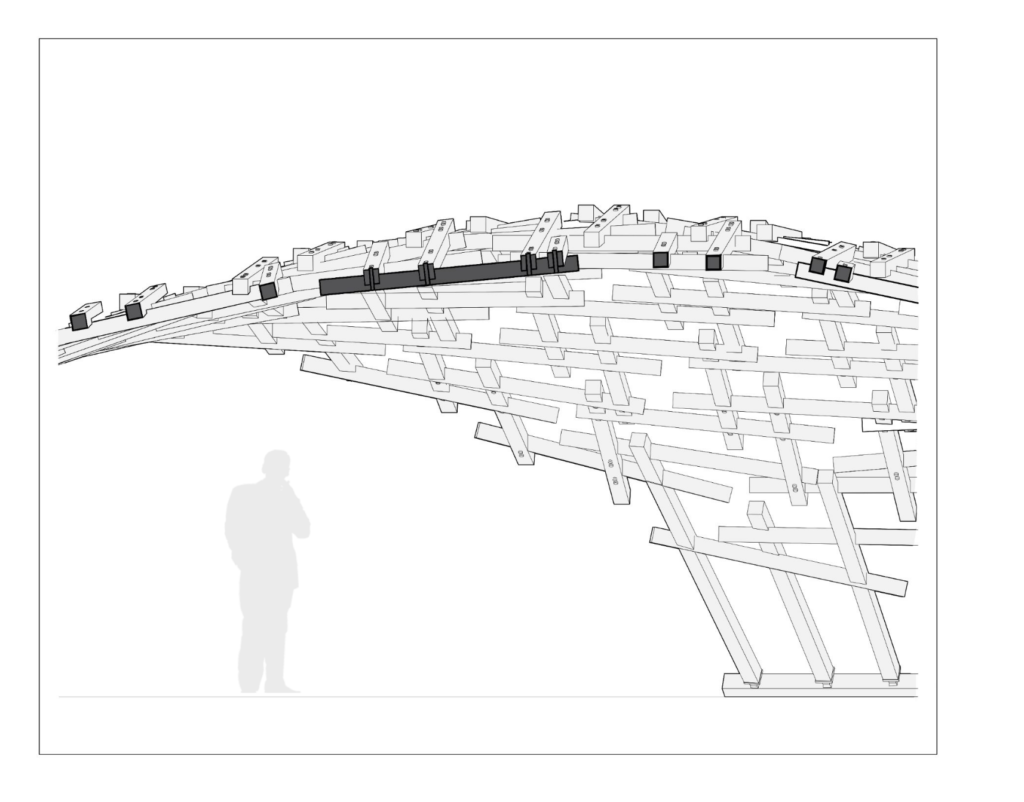
Pattern
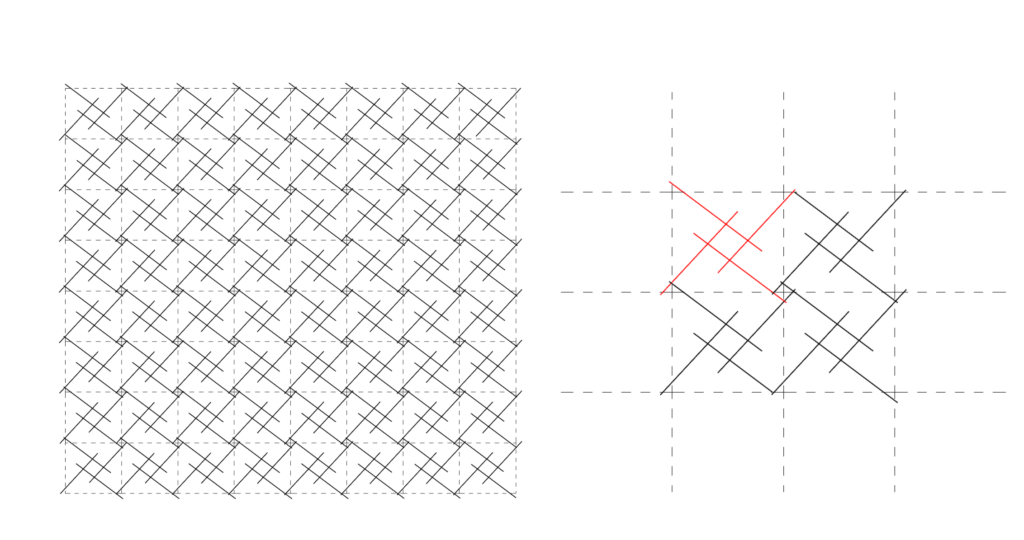
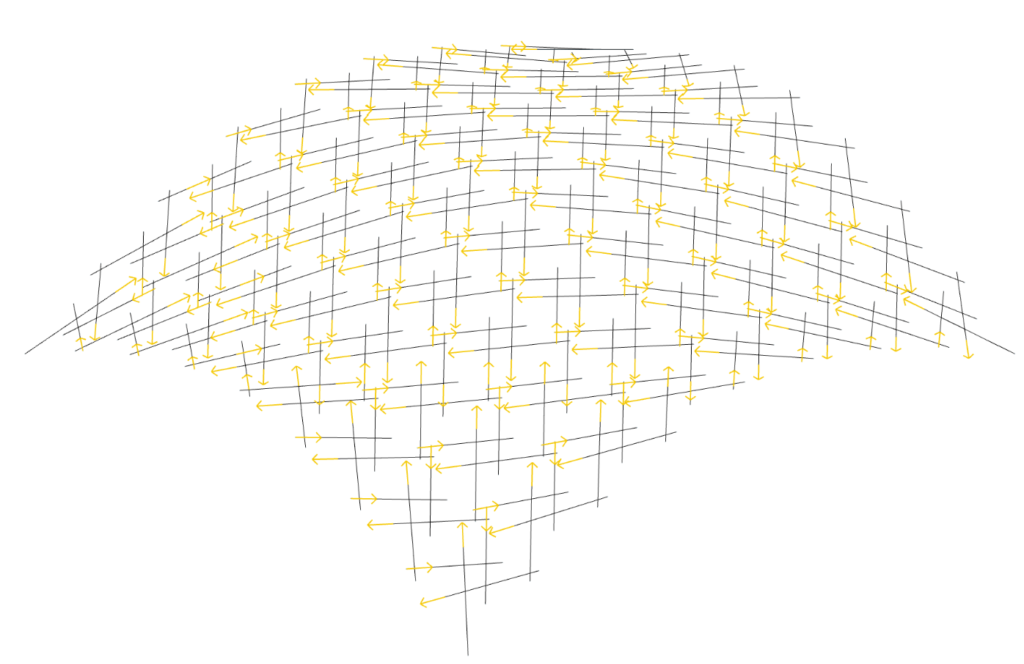
Structural modules
Reciprocal Frame structures are lightweight constructions. With this technique quick repair of the members is possible without endangering the entire structure. This type of structures show advantages in terms of mobility and transportation.
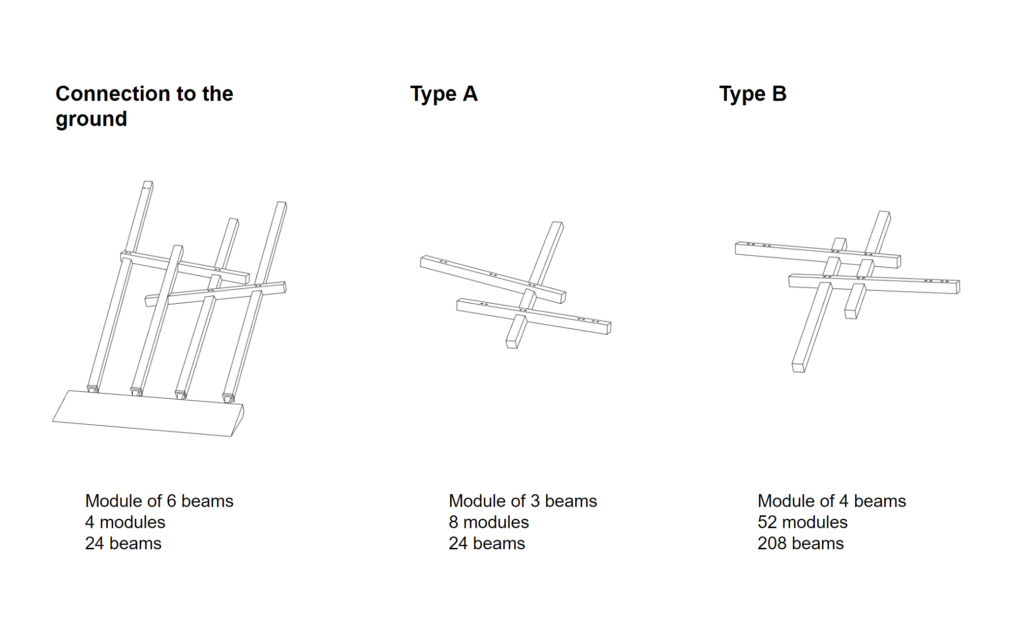
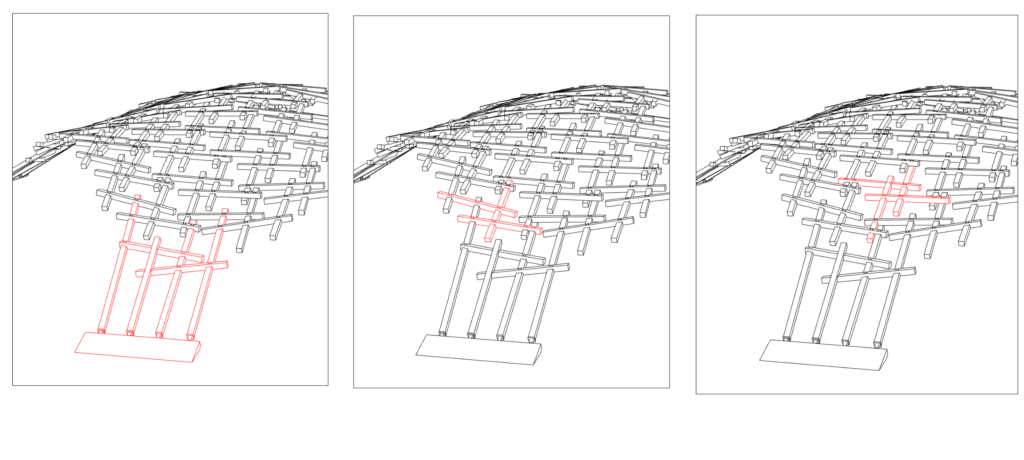
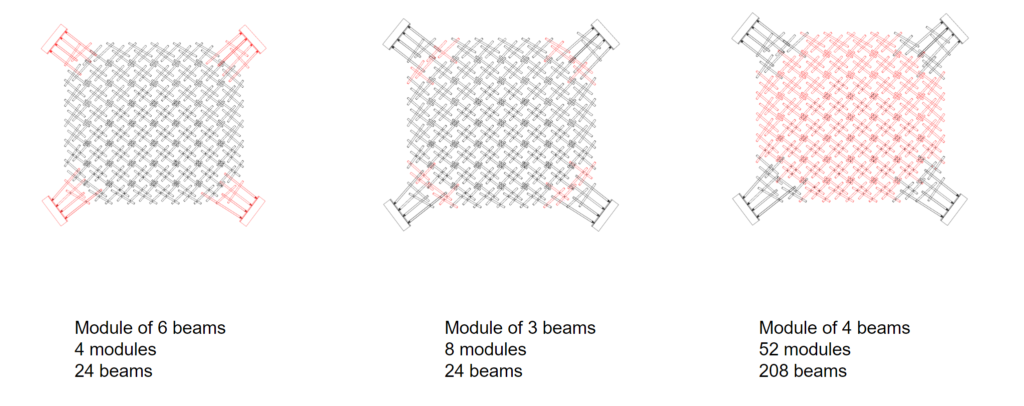
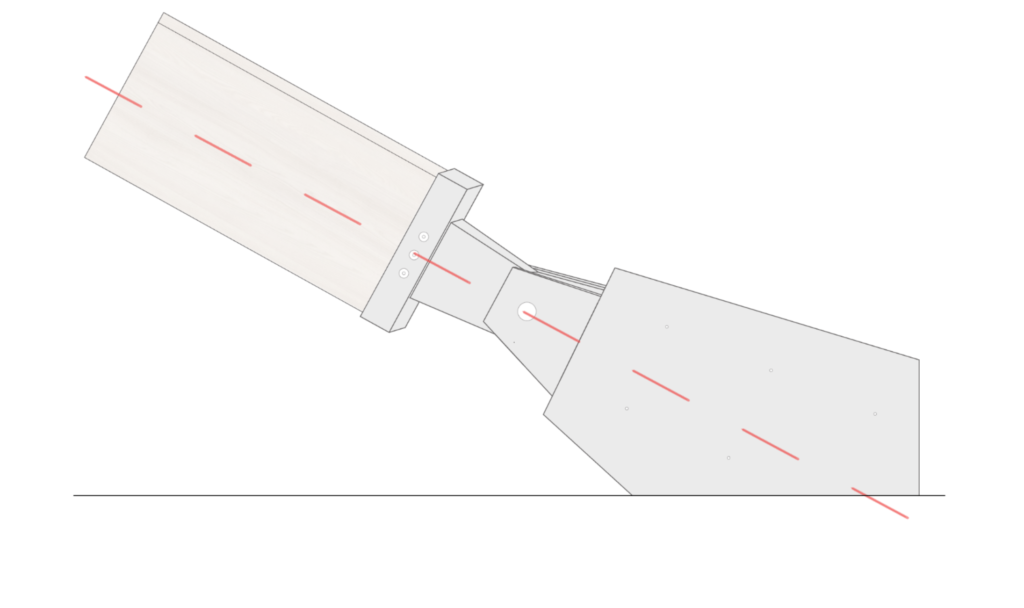
connection to the ground
Assemble – Components Aggregation

This also enables both temporary and permanent interventions or constructions. In times of need this structures can be constructed since they are simple and quickly built. Component aggregation for reciprocal structures can shown to be an on-site built system, where components can be transported to the site and then connected, and space is created.
Renders
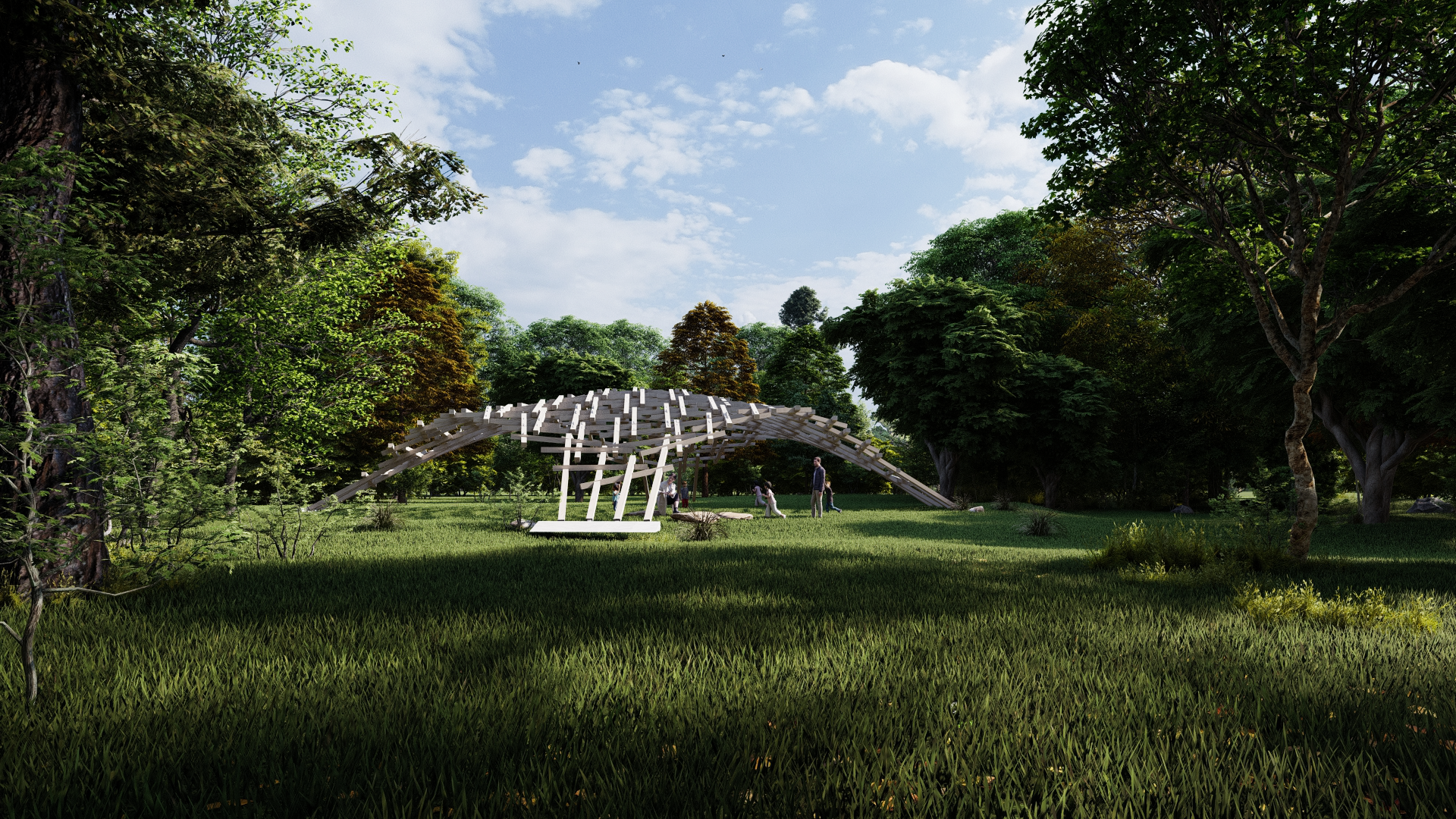
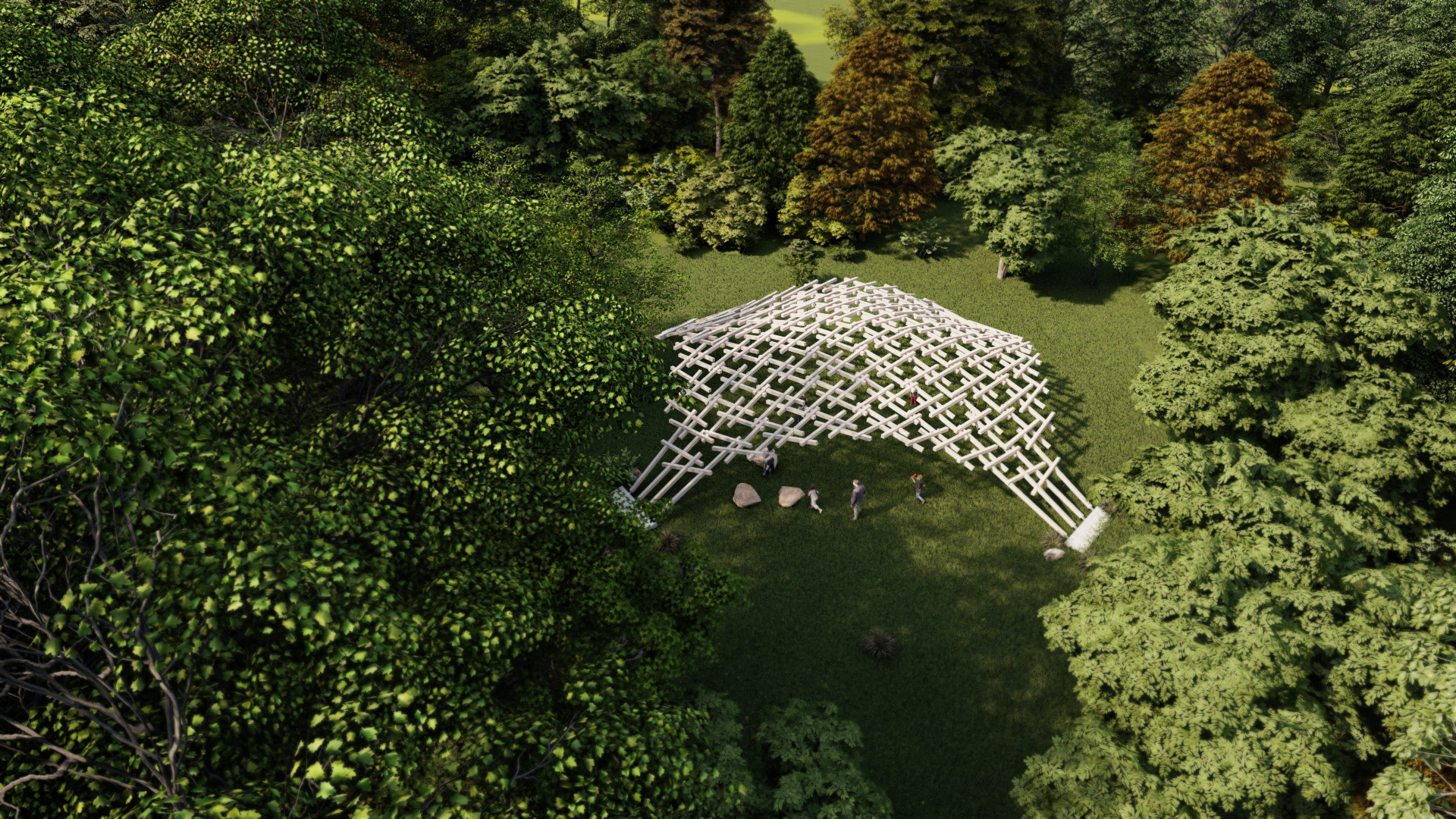
What is digital woodcraft for us?
In the beginning of the course our professors asked us what is digital woodcraft for us. To answer this question we tried to concentrate what we learned during the classes into a formula that would express our understanding of the subject. We see digital woodcraft as all the knowledge we have about working with wood multiplied by experience and supplied with technology. In this formula none of the elements should be equal to 0, otherwise the result will be 0 as well.


